Change the Power button function on Windows 7
Note : This document relates to PC Compaq and HP running Windows 7.
Use the sections of this document to change the function of the power button, to understand the power button control features from the Start menu and to set the power saving features in Windows 7.
Change the power button options
Computer cases with a power button can be pressed to turn off or to put the computer to sleep. Windows 7 helps you control how the computer works after pressing the power button on the computer. The function of the power button can be changed to Do nothing, Sleep, Hibernate or Shut down .
If you want your computer to enter power saving mode or turn off when you press the power button, use the following instructions to change the function of the power button:
1. Click Start, select Control Panel, and then click Hardware and Sound .
2. In the Power Options section , click Change what the power buttons do .
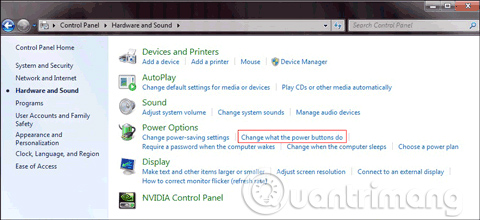
3. In the Power and sleep button settings area , click When I press the power button and choose one of the following options:
- Do nothing
- Sleep
- hibernate
- Shut down
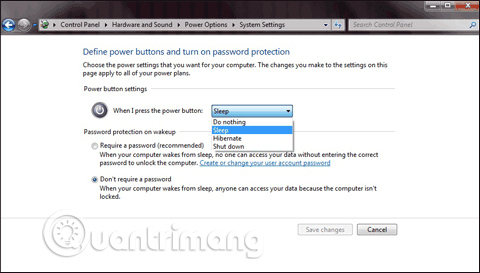
4. Click Save changes and close the Power Options and Control Panel windows.
Use the power button control features in the Start menu
The same options available for power button control features are also in the Start menu. Under normal conditions, the computer should be turned off or put to sleep using the Start menu.
- The Shut down button on the Start menu will shut down the computer.
- The arrow button in the Shut Down menu allows you to choose one of the following options: Switch User, Log Off, Lock, Restart or Sleep .
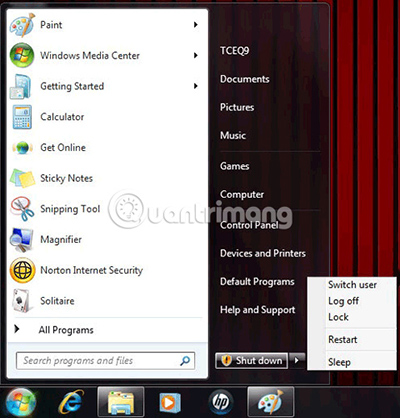


- Switch User : Log out the current user without closing the program and allow quick login to Windows account.
- Log Off: Log out the current user from Windows.
- Lock: Protect your computer when you leave for a short time.
- Restart: Close Windows, shut down and restart the computer.
- Sleep: Keeps your session in memory and puts the computer in a low power state.
Energy saving settings
Follow the instructions below to select a package with specific energy-saving settings:
1. Click Start, select Control Panel, and then click Hardware and Sound . In the Power Options section , click Change power-saving settings .
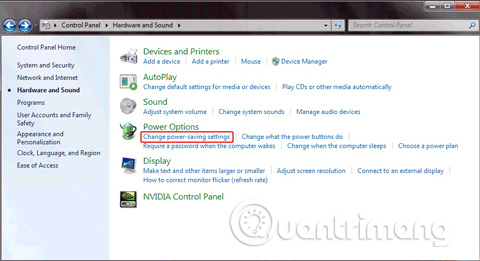
2. In the Power plan window , find the power pack you are using, (it is already selected) and click Change plan settings . Or you can choose a different power pack to meet your requirements: Recommended Settings, Power saver, Balanced or High Performance .
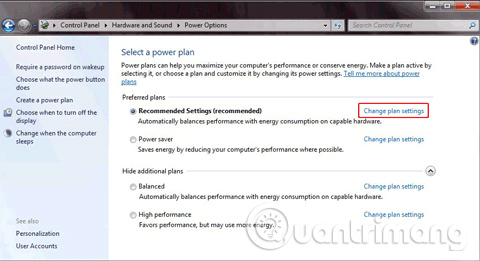
3. In the Change settings window , you can select the number of minutes from the drop-down menu to Turn off the display and Put the computer to sleep .
Additionally, if you click Change advanced power settings , there are additional options to configure for power settings.
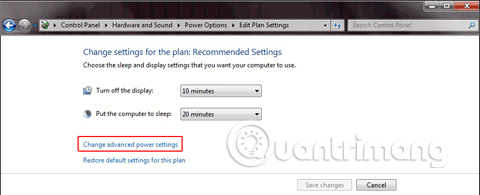
4. Click the plus sign (+) next to each option in the Advanced settings menu to expand the list. Select a new setting from the displayed list.
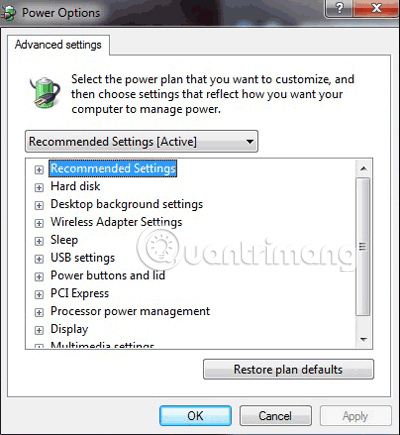
5. After making all changes, click OK to close the Power Options window . Then close the Edit Plan Settings window.
Hope you are succesful.
You should read it
- How to manually turn off the power light and hard drive light on the desktop
- How to turn off Windows 10 computer without waiting for the update to install
- Instructions for fixing errors do not turn off Windows 10 computers and laptops
- How to turn off your computer quickly with a keyboard on Windows
- How to automatically turn on the computer on Windows
- Trick to turn off the computer from the right-click menu on Windows 8
 How to update Win 7, update Windows 7 to the latest version
How to update Win 7, update Windows 7 to the latest version 6 ways to restart your Windows computer from simple to 'Pro'
6 ways to restart your Windows computer from simple to 'Pro' How to fix 0x00000024 error in Windows
How to fix 0x00000024 error in Windows How to change the display language in Windows 7
How to change the display language in Windows 7 How to download Windows 10 Theme for Windows 7
How to download Windows 10 Theme for Windows 7 How to adjust the time to turn off the screen of Windows 7
How to adjust the time to turn off the screen of Windows 7